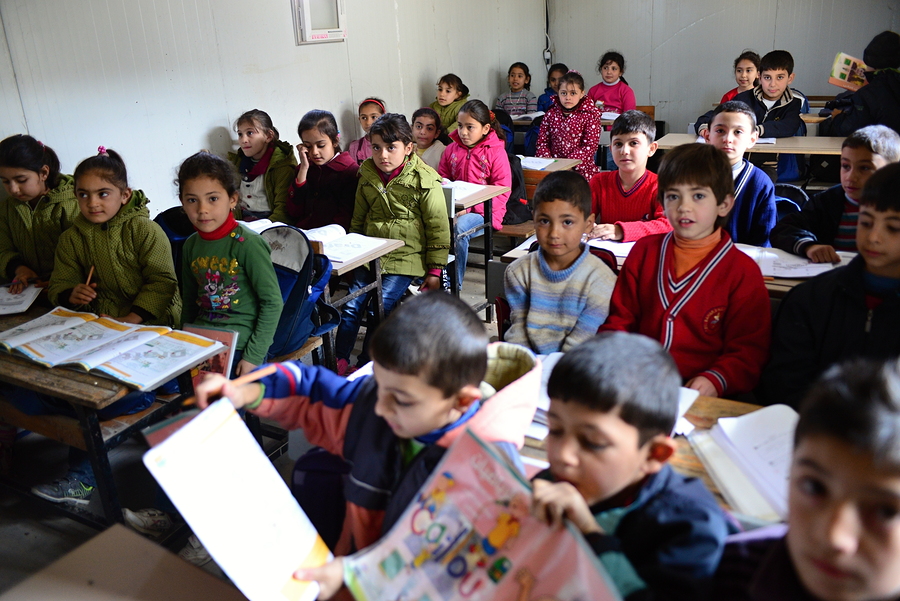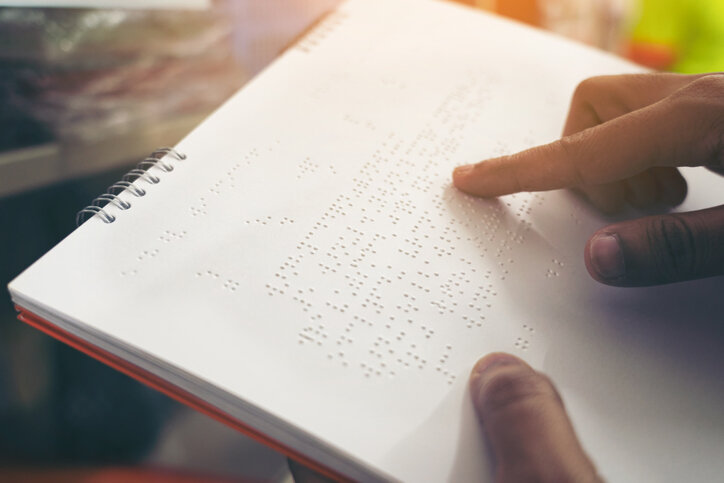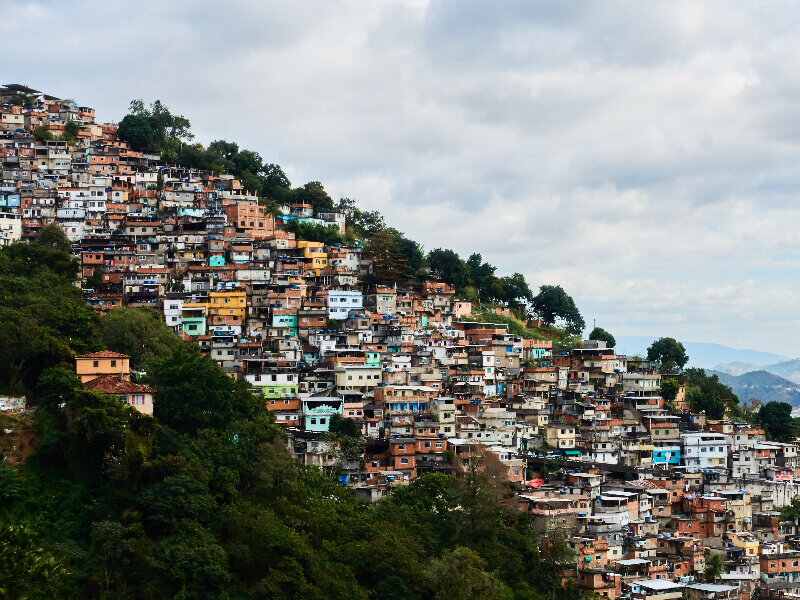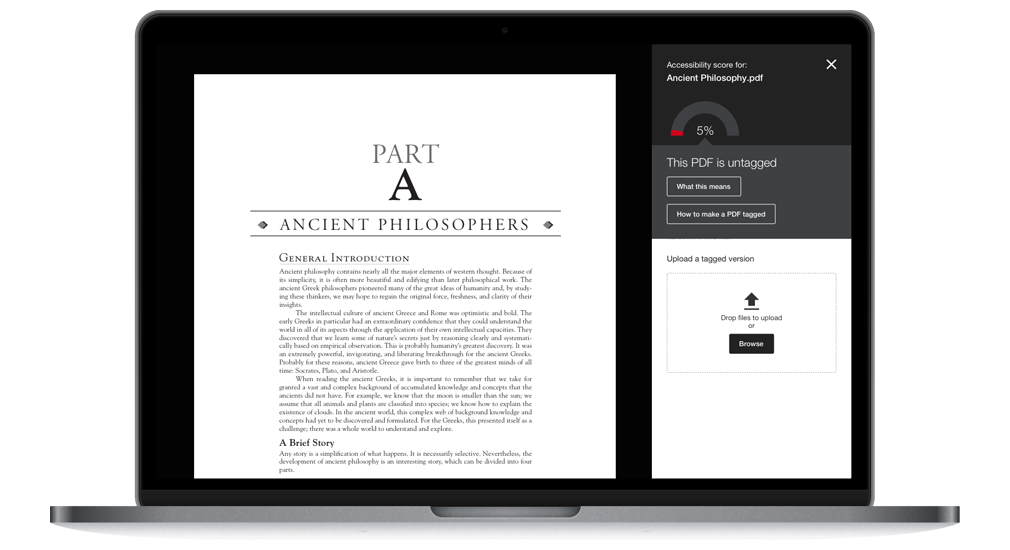In theory, every person has the right to education. In practice, thousands of members of vulnerable populations cannot access this right. What happens when governments allocate funds to seek educational equity?
Photo: Bigstock.
“Without inclusive and equitable quality education and lifelong opportunities for all, countries will not succeed in breaking the cycle of poverty that is leaving millions of children, youth and adults behind. We will not succeed in mitigating climate change, adapting to the technological revolution, let alone achieve gender equality,” Audrey Azoulay, General Director of UNESCO, pronounced this quote on January 24, 2019. It was part of her speech for the International Day of Education.
Since 1948, the Universal Declaration of Human Rights stipulates that all people have the right to access education. But nowadays, many challenges prevent this from being achieved.
A global problem, for example, is the exclusion of vulnerable groups from education.
To try to reduce this exclusion, countries have come up with multiple proposals. One of them has been to increase the educational budget explicitly destined to support vulnerable populations. The Observatory of Educational Innovation analyzed what happened after a measure like this has been implemented in countries with different profiles: from Finland to the Gambia. Most of the cases have been successful and, others had some points to improve.
Why is it important to talk about the educational access of vulnerable groups?
Gaps in access to education for vulnerable groups are a common challenge for all countries around the world. The issue is current, relevant and multifactorial.
“Access to education should not be affected by circumstances beyond the control of individuals, such as gender, place of birth, ethnicity, religion, language, income or disability,” UNESCO’s Handbook on Measuring Equity in Education explains.
Beyond the fundamental importance of universally guaranteeing Human Rights, the document explains that there is evidence linked to the human capital theory and returns on investment in education that has shown that increased educational attainment is associated with higher personal earnings, reduced poverty and higher growth rates of national income.
Now, who find problems to access education?
The Handbook explains that vulnerable populations can be divided into 14 groups, according to their characteristics. These groups are: 1) children with disabilities; 2) girls; 3) children from the poorest households; 4) children in rural / hard-to-reach / remote areas; 5) orphans; 6) ethnic and/or linguistic minorities; 7) children affected by HIV / AIDS; 8) refugees and internally displaced persons (IDPs); 9) children affected by conflict and crisis; 10) child workers; 11) religious minorities; 12) boys; 13) low-demand populations (e.g., pastoralists); 14) street children.
Cases of increases in the budget for the education of vulnerable groups
→ Finland
In Finland, the budget increase to support a vulnerable group in particular –immigrant children– has been a success. So much that consecutively it has been decided to maintain the investment and has even increased its budget over the years.
The context, in this case, is essential. In the Nordic country analyzed, the number of immigrants has been increasing since the 1990s, and the rise has been exacerbated in recent years by requests for refuge. To reduce the vulnerability of this population, different measures have been taken. The most important: the Act of Immigrant Integration (1999), which became the Act on the Integration of Immigrants and Reception of Asylum Seekers (2010).
According to the document The educational tracks and integration of immigrants of the Ministry of Education and Culture of Finland (2006), one of the most important educational reforms of this act happened in 2006, when it was decided that there would be a budget increase in transfers from the central government to the local government, intended for students of foreign languages. Funds from the Ministry of Education and Culture could also be requested.
The results of the budget increase were successful and the vulnerable population benefited.
Jarkko Hautamäki and Tommi Karjalainen, authors of the report The Finnish Education System and PISA, noted that: “immigrant children in Finland scored up to 50 points higher than the average in OECD countries.” They added that this was not due to the intelligence of Finnish children, but because all children in the country had equal access to primary education, and the quality differences between schools were minimal. Therefore, any variation between the school results of the children was also small.
The budget allocated to the education of immigrants has been increasing. In 2017, 17.4 million euros were invested for this cause; in 2018, it grew to 20.4 million, and in 2019 and 2020 it will be 20.8 million.
→ United States of America
The investment that was analyzed in the U.S. happened in 2007 and sought to support two vulnerable populations: disadvantaged people and special education. At a general level it had some successful results, but with ample limitations.
Here’s a little more about the case: In 2007, U.S. federal spending was $ 71.7 billion in elementary and secondary education programs. Twelve federal departments and multiple agencies spent the funds. Of this amount, the strongest investment was allocated to two programs focused on helping vulnerable populations: education for the disadvantaged ($ 14.8 billion) and special education ($ 11.5 billion).
The results of this investment are difficult to measure. In the report, A Closer Look at Title I: Making Education for the Disadvantaged More Student-Centered, Susan Aud explains: “In general, the funding of public education in the United States over the past century has evolved from a fairly simple of local residents who contribute a portion of their income to the education of children in the community […] to a complex system of state and federal funds.”
Despite measurement limitations, the report A National Education Blueprint: Investing in Hispanics to fulfill America’s future (2012), shows positive figures. The document focuses on the results of Latino students (a subgroup of the category of disadvantaged people).
It is explained, for example, that the high school graduation rate reached 81%; specifically, Latino graduation rates went from 64% (2007-08) to 75% (2012-13). Other positive results were: 1) the dropout rate in Latinos fell from 28% in 2000 to 11.7% in 2013; 2) 79% of Hispanic high school graduates in 2012 enrolled in college (this percentage was higher than the 67% rate among their white counterparts).
→ Canada
In Canada, the investment focused on the vulnerable population of linguistic minorities, and it has had good results.
Details of the case: during four fiscal years (2005-2006, 2008-2009), the Department of Canadian Heritage awarded $ 1.02 billion to contribute to the education costs of the vulnerable population who spoke a language minority and a second language. Funding was provided in severa
l categories: regular funds, additional funds, funds for national programs in official languages and supplementary funds. The federal government, on his behalf, also made contributions. The program was part of the Protocol for Agreements for the Education of Linguistic Minorities and Teaching of Second Language.
The results were positive. According to the Evaluation of the Official Languages Support Programs report, “the proportion of young Canadians enrolled in second language programs in the majority of schools across Canada remained stable between 2008-2009 and 2009-2010 (around 53.5%). During the same period, the proportion of young Anglophones outside Québec enrolled in immersion programs increased slightly (from 7 to 7.3%). In absolute numbers, the number of students enrolled in immersion increased by 3.5%”.
→ The Gambia
The case of the Republic of the Gambia to reduce gender inequality in education has brought good results. To achieve them, educational reforms have been combined with increases in government investment.
In 2009, the country invested 17.8% of the national budget in education, and for 2011 the figure increased to 20%. With this –plus the financial support of various international organizations– the Education Plan and Program of the Ministry of Basic and Secondary Education (MoBSE) has been funded, which seeks to ensure that children and young people have access to their right to education. It has had a particular emphasis on vulnerable populations of girls, women, the disabled and the poor. The program covers primary education to university.
In recent years, according to the Education for All report in The Gambia by the UK government, there has been a significant increase in the number of registrations. At the primary level, they went from 52% in 2000 to 61% in 2006 and almost 90% in 2011.
“Specifically, the vulnerable population of girls had notable advances. The proportion of girls to boys in primary education increased from 0.74 in 1996 to 1.04 in 2004; for lower secondary, it increased from 0.72 in 1996 to 1.00 in 2008. And in the upper secondary they went from 0.44 in 1996 to 0.94 in 2008. Since then, basic and secondary enrollment rates have maintained parity,” the document explains.
→ Peru
The Initial Education Improvement Program in the Sierra of Peru included three regions: Ayacucho, Huánuco, and Huancavelica. It started in 2013 and the vulnerable population it attended were children living in areas of extreme poverty.
The objectives of the program were: “to expand the offer and improve the quality of the centers and initial education programs for children 3 to 5 years old. [As well as] provide adequate and safe educational spaces, improve teaching practices and educational management at the initial level, and to promote the participation of families in the education of their children.” The financing was $ 35 million dollars, from both the Ministry of Education and international organizations.
The results, according to a report by the Development Analysis Group (GRADE), were positive. With the program, it was possible that “the students of the PMEI obtained significantly higher scores in the cognitive tests. [Due to] improvements in pedagogical practices (longer school day and better quality) […] and work with parents not only to convey messages about improving parenting practices but also to explain and make them part of the new pedagogical proposals of the school”.
References
Lips, D., Watkins, S. J., & Fleming, J. (2008). Does Spending More on Education Improve Academic Achievement? Backgrounder. No. 2179. Heritage Foundation. Retrieved from: https://www.heritage.org/education/report/does-spending-more-education-improve-academic-achievement
Department of Education (2012). A National Education Blueprint: Investing in Hispanics to Fulfill America’s Future. Retrieved from: https://www.heritage.org/education/report/closer-look-title-i-making-education-the-disadvantaged-more-student-centered
Lips, D., Watkins, S. J., & Fleming, J. (2008). Does Spending More on Education Improve Academic Achievement? Backgrounder. No. 2179. Heritage Foundation. Retrieved from: https://files.eric.ed.gov/fulltext/ED509499.pdf
Castro Rojas, V. (2016). Análisis de formulación del programa “Ser Pilo Paga” (Doctoral dissertation, Universidad del Rosario). Retrieved from: http://repository.urosario.edu.co/bitstream/handle/10336/12526/1136883855-2016.pdf?sequence=1
Alvarez-Rivadulla, M. J., Castro, C., Corredor, J., Londono-Velez, J., Maldonado, C., Rodriguez, C., … & Pulido, X. (2017). El Programa Ser Pilo Paga: Impactos Iniciales En Equidad En El Acceso a La Educación Superior Y El Desempeño Académico (Ser Pilo Paga Educational Program: Initial Impacts on Equity in Access to Higher Education and Academic Performance). Retrieved from: https://papers.ssrn.com/sol3/papers.cfm?abstract_id=3051436
Londono-Velez, J., Rodriguez, C., & Sánchez, F. (2017). The Intended and Unintended Impacts of a Merit-Based Financial Aid Program for the Poor: The Case of Ser Pilo Paga. Retrieved from: https://economics.ucr.edu/pacdev/pacdev-papers/the_intended_and_unintended_consequences.pdf
Ministry of Education and Culture (2016). The educational tracks and integration of immigrants, problematic areas and proposals for actions. Publications of the Ministry of Education and Culture, Finland. Retrieved from: http://julkaisut.valtioneuvosto.fi/bitstream/handle/10024/64986/okm6.pdf
Viitanen, N. & Peltonen, M. (2008). Children with immigrant backgrounds do not explain Pisa success. Retrieved from: http://www.helsinki.fi/news/archive/2-2008/15-16-16-06.html
OECD (2010). Finland: Slow and Steady Reform for Consistently High Results. Capítulo de: Strong Performers and Successful Reformers in Education: Lessons from PISA for the United States. Retrieved from: https://www.oecd.org/pisa/pisaproducts/46581035.pdf
Office of the Chief Audit and Evaluation Executive Evaluation Services Directorate (2013). Evaluation of the Official Languages Support Programs (2008-09 to 2012-13). Retrieved from: http://publications.gc.ca/collections/collection_2013/pc-ch/CH7-18-2013-eng.pdf
Council of Ministers of Education of Canada (2011). Pan-Canadian Report on Official Languages in Education. Retrieved from: https://www.cmec.ca/Publications/Lists/Publications/Attachments/272/olep-report.pdf
Organización de las Naciones Unidas (S/A). La Declaración Universal de Derechos Humanos. Retrieved from: http://www.un.org/es/universal-declaration-human-rights/
UNESCO Institute for Statistics (2018). Handbook on Measuring Equity in Education. Retrieved from: http://uis.unesco.org/sites/default/files/documents/handbook-measuring-equity-education-2018-en.pdf
Global Partnership for Education (2017). Fund Education. Shape the Future, Case for Investment. Retrieved from: https://cerf.un.org/sites/default/files/resources/2017-08-gpe-case-for-investment2_0.pdf
Right to Education Project (2012). Factsheet: The Gambia. Retrieved from: https://www.right-to-education.org/sites/right-to-education.org/files/resource-attachments/RTE_Country_Factsheet_Gambia_2012.pdf
The Government of the United Kingdom (2011). Case Study: Education for all in The Gambia. Retrieved from: https://www.gov.uk/government/case-studies/mdg-3-education-for-all-in-the-gambia
Ministry of Basic and Secondary Education (S/A). THE MoBSE Education plan and Programme. Recuperado de: http://www.edugambia.gm/the-mobse-education-plan-and-programme/basic-education y http://www.edugambia.gm/the-mobse-education-plan-and-programme/the-mobse-education-plan-and-programme
Banco Interamericano de Desarrollo. Perfil del proyecto Programa de Mejoramiento de la Educación Inicial. Retrieved from: http://idbdocs.iadb.org/wsdocs/getdocument.aspx?docnum=35315758
Ministerio de Educación de Perú (2017). Minedu construye 46 escuelas de inicial en Huánuco con una inversión superior a los S/. 69 millones. Retrieved from: http://www.minedu.gob.pe/n/noticia.php?id=43395
Alcazar, L. & Chinen, M. (2018) Evaluación de Impacto del Programa de Mejoramiento de la Educación Inicial en Ayacucho, Huancavelica y Huánuco. Retrieved from: http://www.grade.org.pe/wp-content/uploads/PMEI_AlcazarChinen-1.pdf
Azoulay, A. (2019) Message from Ms. Audrey Azoulay, Director-General of UNESCO on the occasion of International Day of Education. UNESCO document. Retrieved from: https://unesdoc.unesco.org/ark:/48223/pf0000366448_spa
This article from Observatory of the Institute for the Future of Education may be shared under the terms of the license CC BY-NC-SA 4.0 
)
)









)
Sofía García-Bullé
Sofía García-Bullé
Sofía García-Bullé